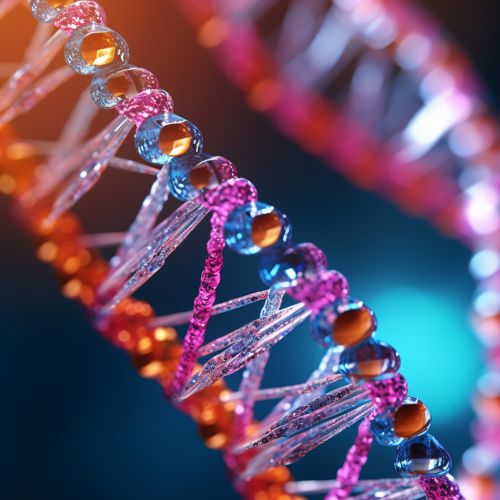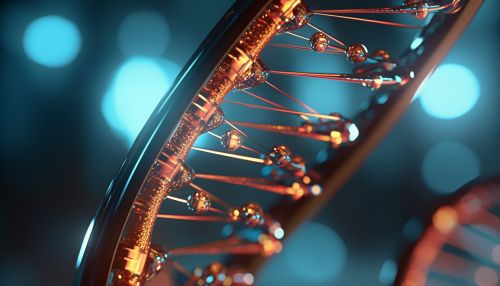Gene transcription
Introduction
Gene transcription is a fundamental process in the expression of genetic information. It is the first step in the central dogma of molecular biology, where genetic information in Deoxyribonucleic acid is transcribed into Ribonucleic acid, which is then translated into proteins. This process is crucial for the regulation of cellular activities and the maintenance of life.
Overview of Gene Transcription
Gene transcription is a multi-step process that involves several molecular components. It begins with the unwinding of the DNA double helix by an enzyme called DNA helicase. This exposes the DNA sequence of the gene that needs to be transcribed.


The process of transcription is catalyzed by an enzyme called RNA polymerase. This enzyme binds to a specific sequence on the DNA, known as the promoter region, and initiates the synthesis of an RNA molecule that is complementary to the DNA sequence of the gene.
The RNA polymerase moves along the DNA strand, adding nucleotides to the growing RNA chain. The sequence of the RNA molecule mirrors the sequence of the DNA strand, with the exception that the nucleotide thymine (T) in DNA is replaced by uracil (U) in RNA.
Stages of Gene Transcription
Gene transcription can be divided into three main stages: initiation, elongation, and termination.
Initiation
Transcription initiation is the first step in the transcription process. It involves the binding of RNA polymerase to the promoter region of the gene. The promoter region is a specific sequence of DNA that signals the start of a gene and directs the RNA polymerase where to begin transcription.
In prokaryotes, the promoter region typically contains two conserved sequences, the -10 box and the -35 box, which are located 10 and 35 base pairs upstream of the transcription start site, respectively. In eukaryotes, the promoter region is more complex and can include several different elements, such as the TATA box, the initiator element (Inr), and the downstream promoter element (DPE).
Elongation
During the elongation phase of transcription, the RNA polymerase moves along the DNA template strand and synthesizes the RNA transcript. The RNA polymerase adds nucleotides to the 3' end of the growing RNA chain, using the DNA template strand as a guide. The RNA transcript is synthesized in the 5' to 3' direction, which is the same direction that the DNA is read.
Termination
Transcription termination is the final stage of the transcription process. It occurs when the RNA polymerase reaches a termination signal in the DNA sequence. This signal is a specific sequence of nucleotides that causes the RNA polymerase to stop adding nucleotides to the RNA transcript and to detach from the DNA.
In prokaryotes, there are two main types of termination signals: rho-dependent termination and rho-independent termination. In eukaryotes, the termination process is less well understood, but it is known to involve the cleavage of the newly synthesized RNA transcript and the addition of a polyadenylate tail.
Transcription Factors
Transcription factors are proteins that regulate the process of gene transcription. They can either activate or repress transcription by binding to specific sequences on the DNA, known as regulatory elements or enhancers.
Transcription factors can function in a variety of ways. Some transcription factors, known as activators, increase the rate of transcription by recruiting the RNA polymerase to the promoter region. Other transcription factors, known as repressors, decrease the rate of transcription by blocking the binding of the RNA polymerase to the promoter region.
Regulation of Gene Transcription
The regulation of gene transcription is a complex process that involves multiple levels of control. It is crucial for the proper functioning of cells and organisms, as it allows for the precise control of gene expression in response to changes in the environment or developmental cues.
One of the main mechanisms of transcriptional regulation is through the action of transcription factors. These proteins can bind to specific sequences on the DNA and influence the rate of transcription.
Other mechanisms of transcriptional regulation include the modification of the DNA, such as methylation, and the modification of the histones, proteins that the DNA is wrapped around. These modifications can influence the accessibility of the DNA to the transcription machinery and thus regulate the rate of transcription.
